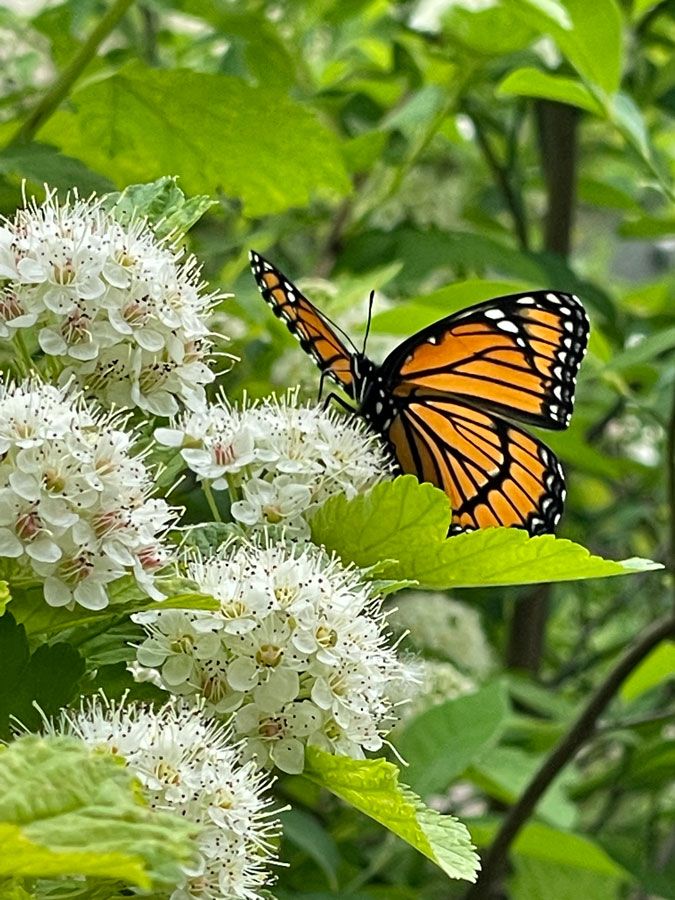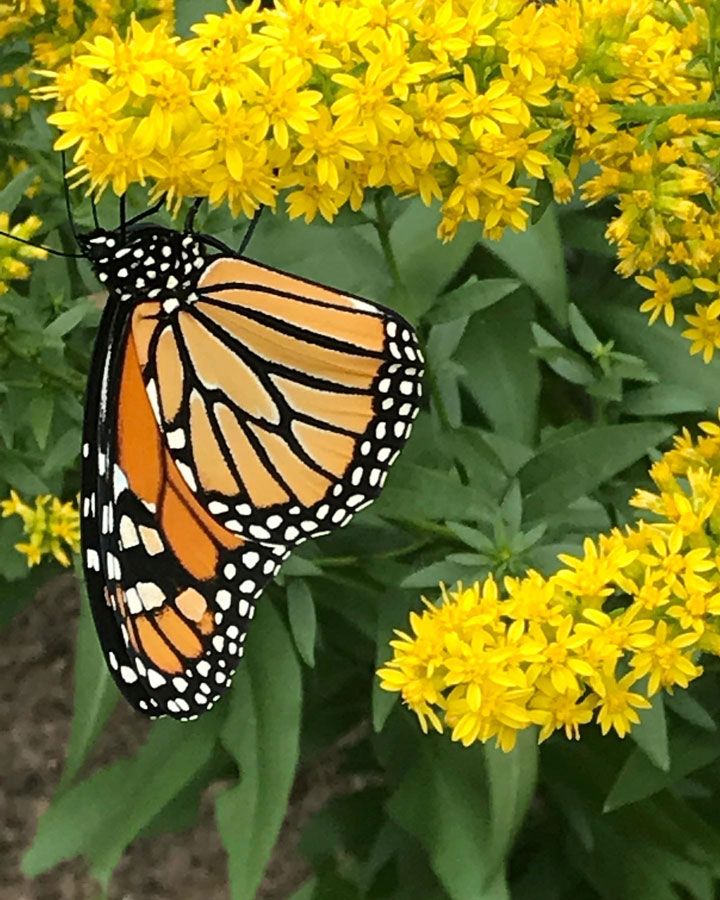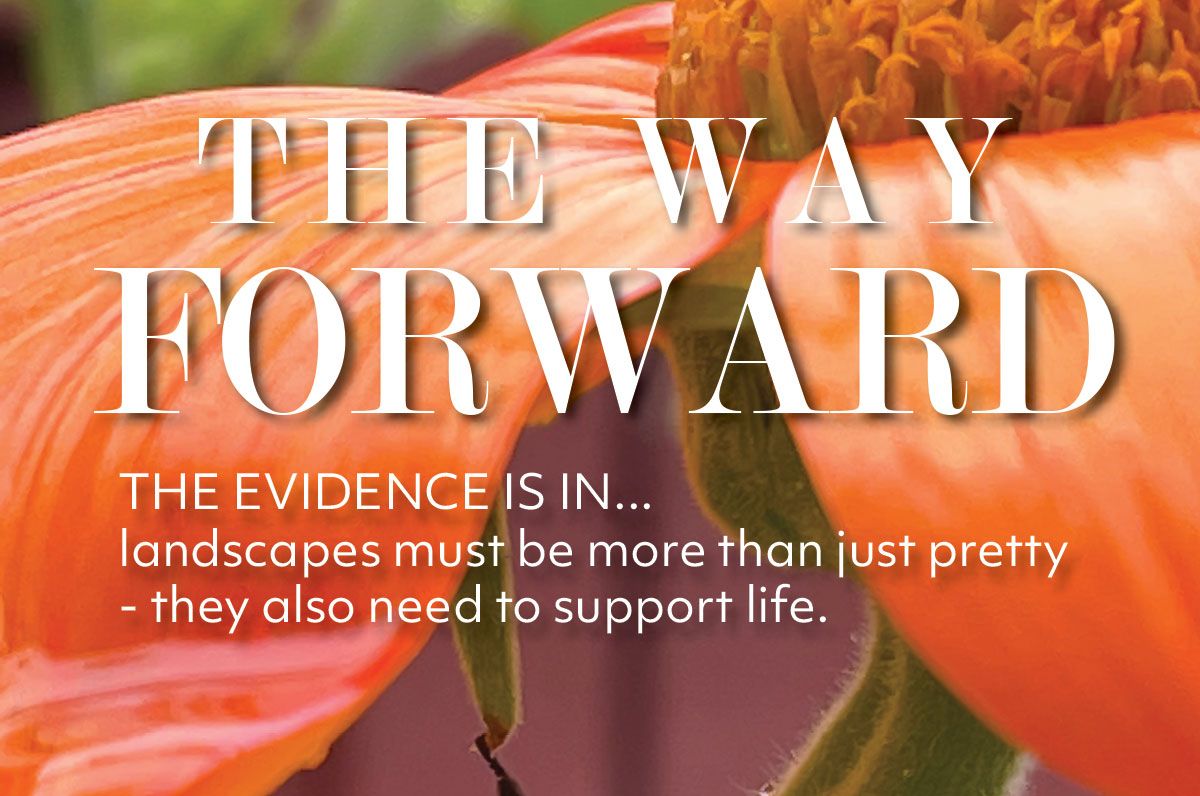
Written By Megin Potter | Photos by Johanna Garrison
In our changing climate, it is frivolous to design for aesthetics alone.
By reclaiming the urban environment and transforming it into a collection of vibrant green spaces, we regenerate biodiversity, restore animal habitat, and increase abundance in vulnerable ecosystems.
Plantings improve air quality, especially at busy intersections where pollution emissions are concentrated. Through evapotranspiration, plants mediate the urban heat island effect, reducing the need for high-energy use ACs in surrounding buildings.
Plants also sequester carbon. Mature trees are masters at maximizing this superpower, each storing as much as 48 lbs. of carbon annually compared to every square meter of turf grass, that absorbs as little as 46 grams, said Johanna Garrison.
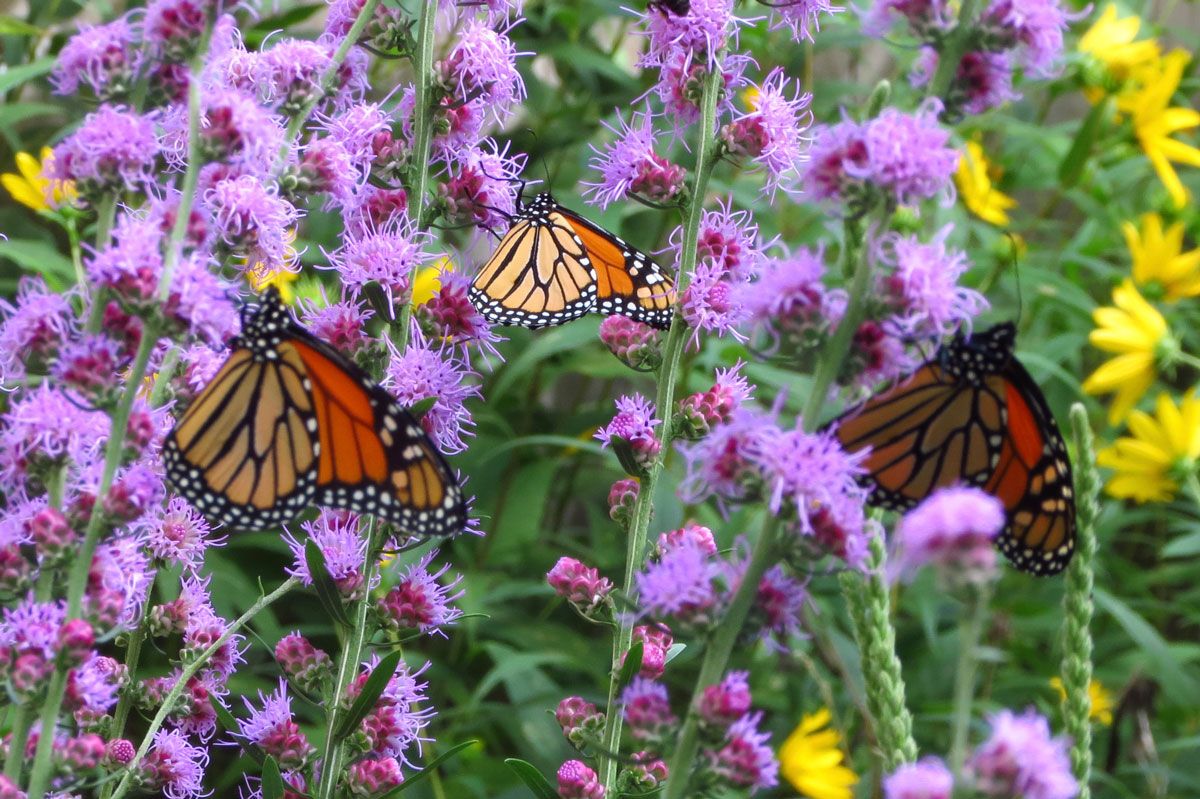
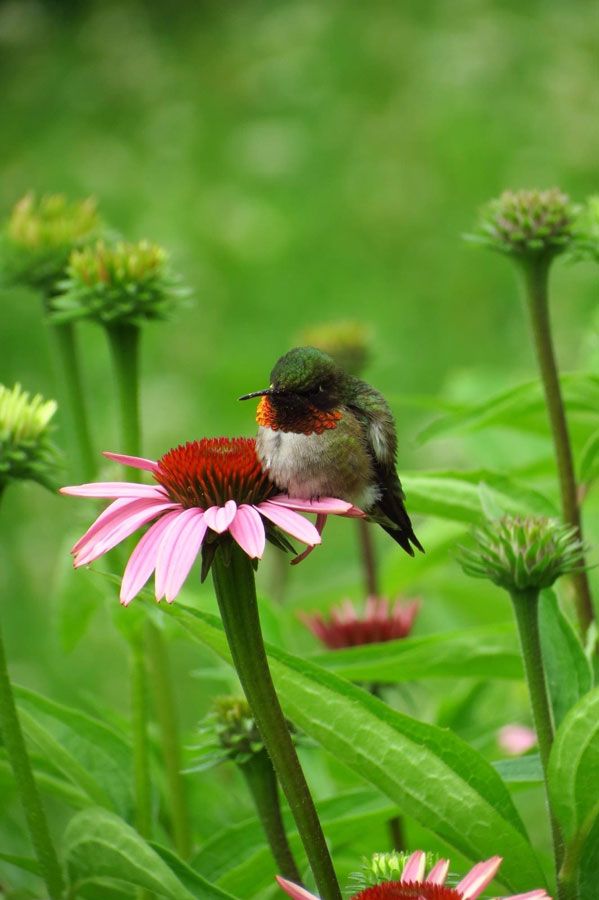
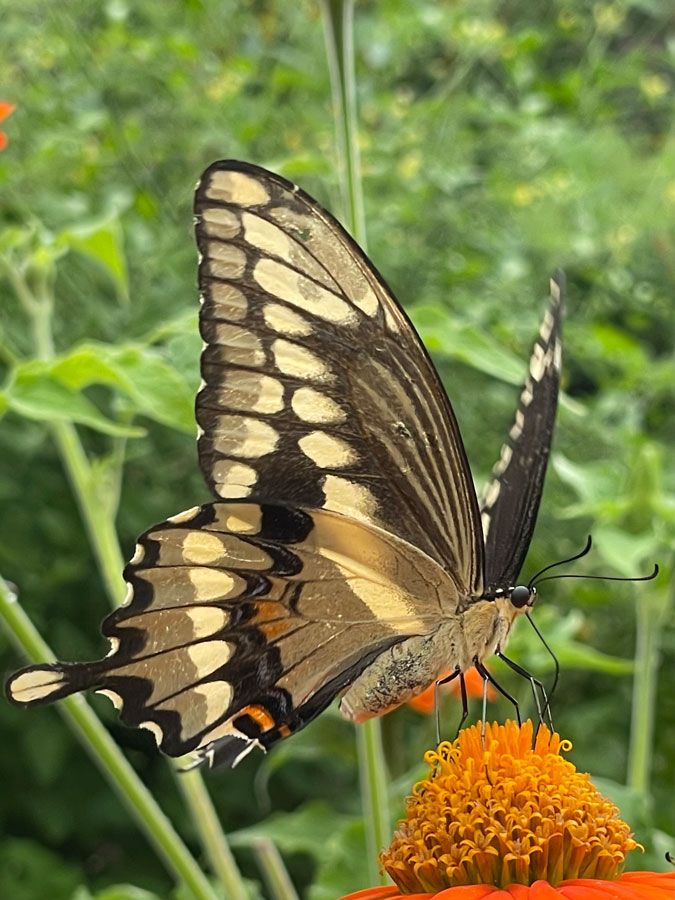
Growing a Passion for Pollinators
Characterizing herself as a pretty-plant purchaser with a head for hodge-podge design, Johanna’s perspective changed in 2015, with her family’s new net-zero home. Suddenly, she had a blank canvas.
With help from local native plant experts Jesse Peters, founder of Jessecology, and Dawn Foglia, of Wild Things Rescue Nursery, Johanna’s yard became a beautiful habitat and food source for pollinators, songbirds, and other wildlife. She began composting, leaving the fall leaves, and above all, learning.
“We need to stop villainizing insects. We don’t want ants in the pantry or flies at the picnic, but people should thank a fly the next time they eat chocolate because they pollinate the cacao tree,” she said.
Invertebrates are despised for eating crops and spreading diseases. Their benefits however, far outweigh these drawbacks, as they naturally regulate pest populations, improve the soil, sustain larger wildlife, and provide protein to roughly 80% of the world’s population.
Native plants are essential because they have coevolved with native insects, and both rely on each other to survive. Without them, songbirds are in danger; it takes 7- 9,000 caterpillars to feed just one clutch of baby chickadees, she added, referencing Doug Tallamy, author of the acclaimed, Bringing Nature Home.
In 2020, Johanna, a teacher for 30 years, joined Sustainable Saratoga and has helped lead the organization’s efforts to educate others about the importance of pollinators. The initiative fits well with the organization’s other efforts, including the popular “No Mow May” and “Pardon my weeds, I’m feeding the bees” programs.
Johanna has also joined Tom Denny, and the nonprofit SoBro Conservancy of Saratoga to transform one of the city’s most prominent intersections, at 209 South Broadway (see page 118 for more on the parcel’s history).
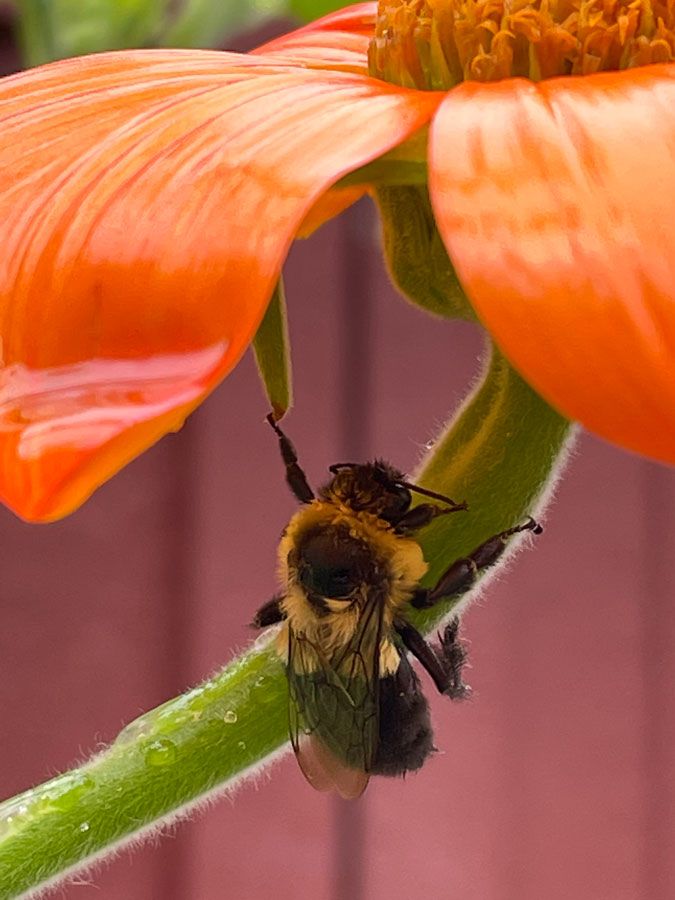
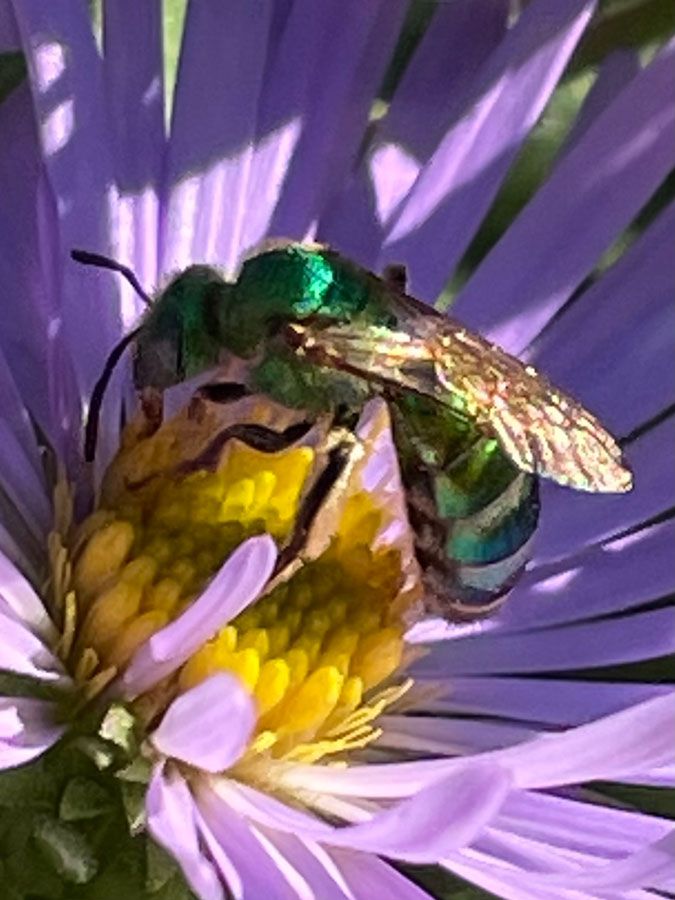
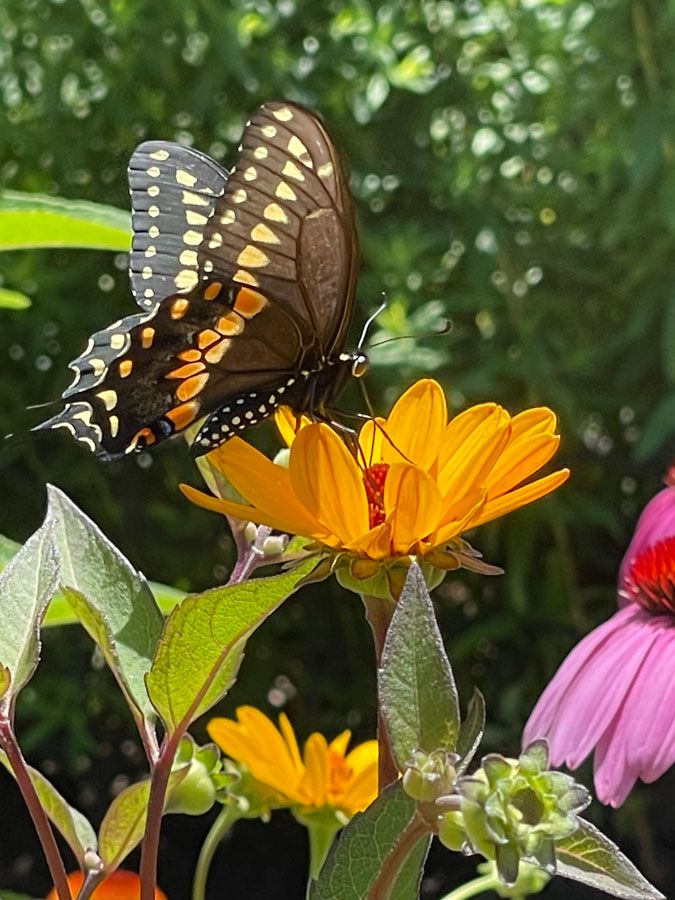
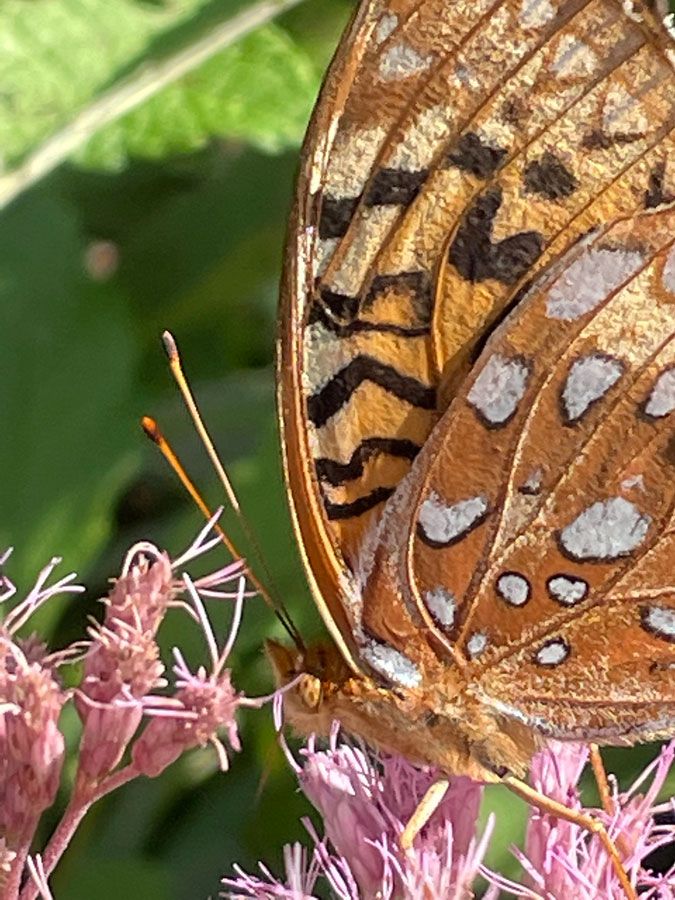
Regreening the Gateway to South Broadway
This triangular .2-acre lot served as home to a gas station for 63 years before sitting vacant for two decades. Now, it is becoming a piece of a much larger network of fragmented green spaces being knit together throughout the city to create a wildlife corridor connecting Congress Park, Spa Park, Greenridge Cemetery, the YMCA, Railroad Run, Pitney Meadows, and more.
Last fall, Skidmore College students mapped the characteristics of wildlife foraging areas within the city and soil tests were conducted. The results drew a clear picture of how challenging the area would be to repopulate, said Tom. The soil has a high PH, very little organic matter, is heavily compacted, and sandy. SoBro has already begun working to improve and rebuild the soil quality.
With advice and inspiration generously provided by many farmers, educators, and organizations including the City Department of Public Works, Cornell Cooperative Extension, and others, SoBro is turning broad strokes into action. They have hosted two work days, with an estimated 25 volunteers coming out to help each day. SoBro’s core planning group also turned to Shanti Nagel, founder of Design Wild, for a pollinator-friendly planting plan, which includes wood mulch paths, informal boulder seating, and a variety of large shade trees, shrubs, flowers, and ground cover for year-round interest.
"In May, we will get connected to the City water supply. We can then plant some anchor trees, a red oak, a basswood, and a tulip, all of which mature to 60 feet or more in height. Plans are being formed regarding other plantings this summer and fall, and for Phase 2 in 2024,” said Tom. Currently funded through a silent campaign of private donations, SoBro has also applied for grants to help cover costs.
Go Native
Every resident can help green the city with SoBro’s pocket park as inspiration.
To attract pollinators, plant keystone perennials such as asters, goldenrods, and sunflowers. Fireflies require moisture and native grasses like Carex; wasps are drawn to mountain mint; and honeysuckle (sempervirens) beckons hummingbirds. Add height with redbud, viburnum, service berry, and spice bush.
With container planters, every patio, step, porch, and balcony can help in the cause. Try nectar-rich annuals like Tithonia, zinnia, Brazilian vervain, and native partridge pea.
For native blooms ablaze by August, Johanna recommends low-maintenance goldenrod, mountain mint, salvia, aster, ironweed, and little bluestem.
For more information about native plants,
visit sustainablesaratoga.org/projects/pollinator-protection-initiative
Mark Your Calendar: Sustainable Saratoga’s 2nd Annual Pollinator Palooza will have a menu of 30+ varieties and 1800 native plants for sale on June 4th, 10 a.m. – 2 p.m., at Oligny's Former Nursery & Garden Center, 390 Wilton Gansevoort Rd, Gansevoort.
